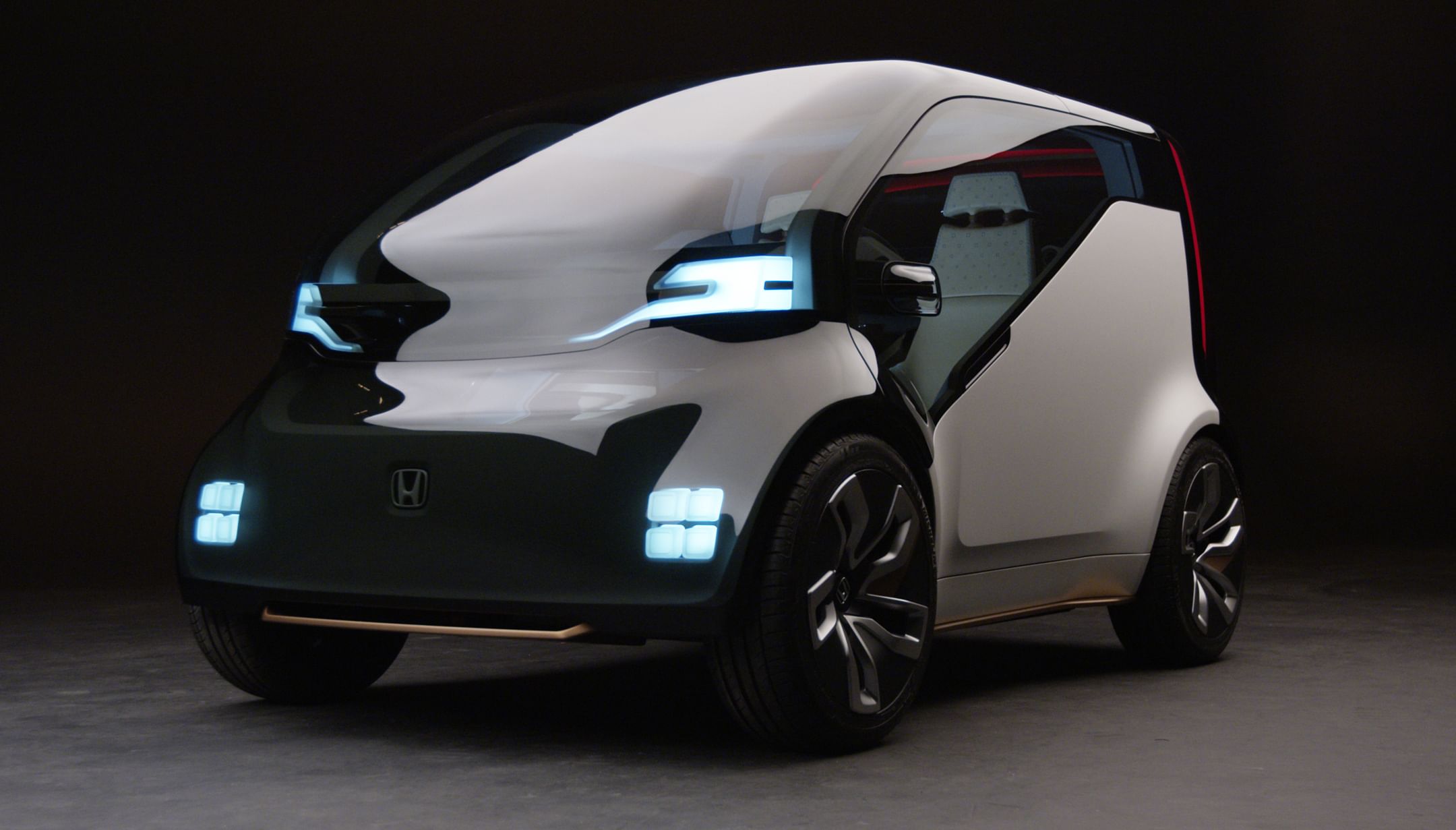Honda leverages robotics tech for concept motorcycle at CES
Rather than relying on gyroscopes, which add a great deal of weight and alter the riding experience, the Honda Moto Riding Assist incorporates technology developed for the company’s UNI-CUB personal mobility device.
Honda unveiled its Cooperative Mobility Ecosystem concept today at CES 2017 in Las Vegas, connecting the power of artificial intelligence, robotics and big data to transform the mobility experience of the future and improve customers’ quality of life.
Featuring a number of prototype and concept technology demonstrations at CES, the Honda concept envisions a future where vehicles will communicate with each other and infrastructure to mitigate traffic congestion and eliminate traffic fatalities, while increasing the productivity of road users and delivering new types of in-vehicle entertainment experiences. Vehicles will create new value by autonomously providing services when not in use by their owners.
The Japanese automaker also announced collaborations with Visa, DreamWorks Animation and innovative start-ups through the Honda Developer Studio and Honda Xcelerator open innovation programs based out of Honda Silicon Valley Lab. Further, as part of its effort to accelerate open innovation, Honda has established a new URL for areas including AI, Big Data and Robotics. Interested companies and individuals can access www.honda.co.jp/openinnovation/.
Supporting its Cooperative Mobility Ecosystem theme, Honda introduced the Honda NeuV, an electric automated mini-vehicle concept equipped with an artificial intelligence (AI) ‘emotion engine’ and automated personal assistant, creating new possibilities for human interaction and new value for customers.
Global debut of Moto Riding Assist
Honda had the global debut of the Moto Riding Assist, a concept motorcycle that applies Honda’s robotics technology to maintain balance.
Moto Riding Assist technology leverages Honda’s robotics technology to create a self-balancing motorcycle that greatly reduces the possibility of falling over while the motorcycle is at rest. Rather than relying on gyroscopes, which add a great deal of weight and alter the riding experience as announced by other companies, the Honda Moto Riding Assist incorporates technology originally developed for the company’s UNI-CUB personal mobility device.
“Since our founding, Honda has focused on creating technologies that help people,” said Yoshiyuki Matsumoto, president and CEO of Honda R&D Co. “Our goal is to showcase a future technology path that results in a redefined mobility experience.”
NeuV automated ride-sharing vehicle
Designed to create new possibilities for customers, the NeuV (pronounced ‘new-v’), which stands for New Electric Urban Vehicle, is a concept vehicle whose genesis is based on the fact that privately-owned vehicles sit idle 96 percent of the time. The NeuV explores the idea of how to create new value for its owner by functioning as an automated ride sharing vehicle, picking up and dropping off customers at local destinations when the owner is not using the car. The NeuV also can sell energy back to the electric grid during times of high demand when it’s not in use. These activities have the potential to create a new business model for enterprising customers.

“We designed NeuV to become more valuable to the owner by optimizing and monetizing the vehicle’s down time,” said Mike Tsay, principal designer, Honda R&D Americas.
NeuV also functions as a thoughtful and helpful AI assistant utilizing an ‘emotion engine’, an emerging technology developed by Honda and SoftBank. Called HANA (Honda Automated Network Assistant), in its application in the NeuV, the ‘emotion engine’ will learn from the driver by detecting the emotions behind the driver’s judgments and then, based on the driver’s past decisions, make new choices and recommendations. HANA can check on the driver’s emotional well-being, make music recommendations based on mood, and support the owner’s daily driving routine.
The NeuV features a full touch panel interface enabling both the driver and passenger to access a simple and convenient user experience. The vehicle has two seats, a storage area in back, and an electric skateboard for “last mile” transit. The NeuV also features outstanding outward visibility via a headerless windshield and a dramatically sloping belt line that make maneuvering easy.
RELATED ARTICLES
Volkswagen Group sells 465,500 BEVs worldwide in first-half 2025, up 47%
With strong growth in Europe (+89%) and the USA (+24%), despite a sales decline in China (-34%), the VW Group’s global B...
Skoda begins sale of made-in-India CKD Kushaq in Vietnam
Before production started, pre-series Kushaq vehicles covered over 330,000 kilometres on a variety of Vietnamese roads a...
Six Japanese companies join forces to expand use of recycled materials in new vehicles
Denso, Toray Industries, Nomura Research Institute, Honda Motor, Matec Inc and Rever Corporation have set up the BlueReb...





 By Autocar Professional Bureau
By Autocar Professional Bureau
 06 Jan 2017
06 Jan 2017
 7567 Views
7567 Views









